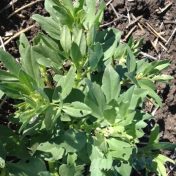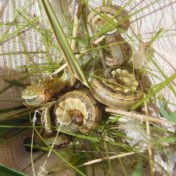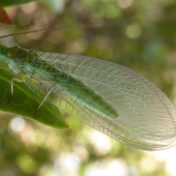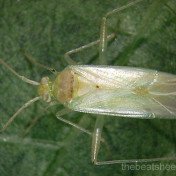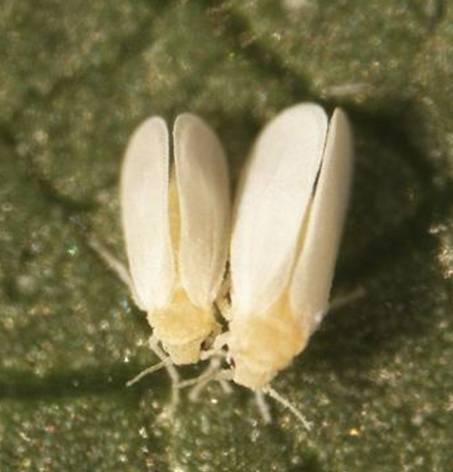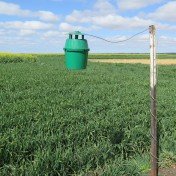While drought has dashed the planned rotations of many growers, there is still a risk of pest outbreaks at this time of year. Below are some of the most common to keep an eye out for. A note on withholding periods following insecticide use in crops that are diverted to stock If insecticide treatments have been applied to crops which… Read more »
Armyworm infestations of barley crops, in particular, are being reported from southern NSW to the Darling Downs. Large numbers of moths are also being seen around lights at night. It is not unexpected that armyworm would be abundant this spring as some of their source areas (Channel Country, North Western Queensland) would have received significant rainfall or flows earlier in… Read more »
Green lacewing larvae are generalist predators, and are important natural enemies of a range of pests including aphids, helicoverpa, whitefly and mealybugs. There are many species of green lacewings in Australia, including some that commonly occur in field crops. Readers are most likely to be familiar with Mallada signatus, which regularly features in ID guides, but another species, Plesiochyrsa ramburi… Read more »
After the introduction of Bt cotton in the 1990s, the focus of cotton pest management has shifted to sucking pests. Green and brown mirid (Creontiades spp.) damage can occur at any stage, from seedling to boll filling, although crops are usually attacked before peak flowering. Feeding damage (including terminal death, abscission of young squares and bolls, and lint damage in… Read more »
Significant soybean aphid (Aphis glycines) populations have now been observed in many coastal soybean crops. Once the crop approaches late flowering, a spray decision must be made as later aphid infestations can severely delay harvest maturity. Careful monitoring is required to determine if populations are trending upwards to and beyond threshold levels, or if the aphids are being contained by… Read more »
With cotton crops approaching cut-out, it’s time to make critical decisions regarding silverleaf whitefly (SLW) management. Recent hot weather has seen SLW numbers increase in many areas—indicating that a number of fields are likely to require control action soon. SLW has evolved to become one of the most complex insects to manage in a cotton system because we are essentially controlling… Read more »
Notes from the meeting at DAF, Monday 21 January 2019 The South Australian Research Institute (SARDI) leads the major GRDC investment in Russian Wheat Aphid (RWA) research in southern Australia. Dr Maarten van Helden and Tom Heddle (SARDI) were in the northern grains region conducting a survey of RWA in the ‘green bridge’ (roadside grasses) during January 2019 (GRDC project… Read more »
Monday 21 January at 8 am Green Room, QDAF Conference Centre, 203 Tor St, Toowoomba. In October 2018, detections of Russian wheat aphid (RWA) were made in Cowra, Forbes, and Condobolin on the Liverpool Plains, and Coonabarabran. NSW DPI Biosecurity reported these detections (read the document here). The map below shows the location of RWA detections in NSW. No detections have… Read more »
The 2018 spring Helicoverpa pheromone trapping program for the Northern Grains Region has recently concluded. The program, run by the Queensland Department of Agriculture and Fisheries for the Northern Grain Growing region, forms part of the national Helicoverpa monitoring network jointly run by DAF, cesar, SARDI, and DAFWA. The primary purpose of the trapping network is to detect high moth… Read more »
A new resistance management strategy (RMS) for Helicoverpa armigera has been released for the northern grain production region. It is anticipated that it will be adopted first in the current chickpea crop. H. armigera is a major pest of grain crops and presents a significant management challenge due to the current reliance on chemical control, and resistance to several insecticide… Read more »
